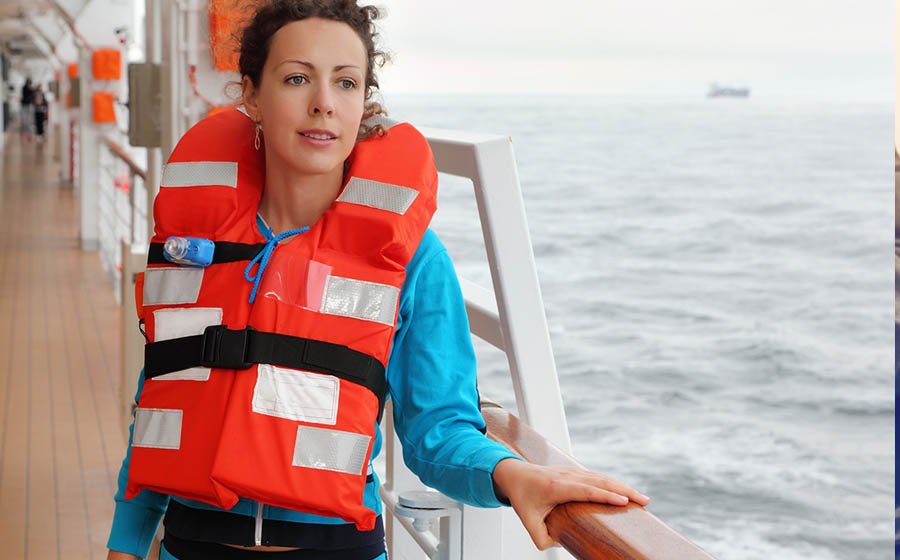A cruise ship vacationer’s itinerary typically includes an excursion. Some even carefully plan every aspect to a T – onboard entertainment, what to wear, the food, the port of call, where to shop, and more. All the same, many travelers overlook the potential hazards of a cruise ship experience, including the most frequent type of injury: slips, trips, and falls.
Cruise ship injuries can have serious ramifications for travelers. But if you believe your injury resulted from a cruise line’s negligence, you might have a case against them. For starters, you can get more info here – learn how a knowledgeable legal professional may help you pursue a personal injury claim.
But how do slip and fall accidents occur? And how can you stay safe while having the time of your life on the high seas? Read on for all the details.
Slip, Trip, and Fall Injuries on Cruise Ships
A study to establish the most common cause of passenger injuries aboard a cruise ship revealed that slips and falls accounted for 44.8% of onboard injuries and roughly 69% of injuries ashore – underlining the importance of staying vigilant while on a cruise.
Cruise ship slips, trips, and falls can occur in numerous ways, usually due to the cruise line’s negligence. Common causes of injury include:
- Wet or slippery surfaces due to spills, turbulence, improper cleaning, or failure to install slip-resistant flooring
- Unsecured carpets or rugs
- Inadequate handrails on stairs, ramps
- Poorly lit pathways or stairways
- Obstructed walkways and decks
- Uneven surfaces
- Loose wires
- Damaged floors
Any of these conditions could risk passengers’ health and safety. Plus, if a cruise line fails to warn passengers of potential hazards, they may be liable for resulting injuries.
Granted, they may not avert every risk imaginable. But, they owe passengers a duty of care to take reasonable measures to protect them from foreseeable hazards.
How to Stay Safe on a Cruise Ship
If you’re jittery about the hazards you’re likely to face while on a cruise ship, you can adopt various measures to minimize your risk. Here’re some travel tips to help you stay on your feet:
- Wear flat, comfortable shoes with non-skid soles – the deck can get slippery when wet, hence, avoid flip-flops and similar footwear that can easily slip off your feet. Also, take it slow and be mindful of wet surfaces. If possible, steer clear of wet or slippery areas.
- Know the drill – evacuation plans are created with your safety in mind. Be mindful of safety instructions or other announcements made onboard.
- Pay attention to signage warning of slippery surfaces or other potential hazards. If signs are absent, take extra caution and use your best judgment.
- Be careful when getting in and out of the pool – floors, and stairs around the pool can be slippery. Dry your feet off immediately after swimming to minimize the risk of slipping or falling.
- Drink responsibly – excessive drinking can impair your balance and coordination, making slips and falls more likely. Overindulgence can also lead to unwise decisions, such as trespassing into restricted areas or engaging in risky behavior.
- Always hold the handrails when going up or down the stairs – they’re in place to prevent accidents.
- Move methodically and mindfully – take your time around the ship and be aware of your surroundings. The more in tune, you are with your environment, the less likely you are to slip or trip. And if a situation calling for crowd control arises, stay alert and follow directives in a safe and orderly manner.
- Report unsafe conditions immediately – if you notice a spill on the floor or broken handrail, let the crew know immediately. You could save someone else from getting hurt.
- Exercise caution when touring around – the activities ashore can be equally hazardous. Watch your step and avoid unfamiliar areas unless you know local laws and customs. Also, it’s preferable to book activities through the cruise line, as they’re likely to be more reliable. Usually, they vet activity providers and only book trips with companies that have a history of safe practices. You could also check reviews of the tour operator online before booking.
- Know your limits – you might be tempted to try all the cruise ship activities, but it’s better to listen to your body and avoid straining yourself. Don’t take part in activities you feel uncomfortable about or go beyond your physical capabilities.
Precaution is the best approach to staying safe on a cruise ship. Hopefully, these steps can help ensure you have an enjoyable and injury-free holiday. But should the unexpected happen, contact an experienced maritime lawyer to help you chart a course of action.










